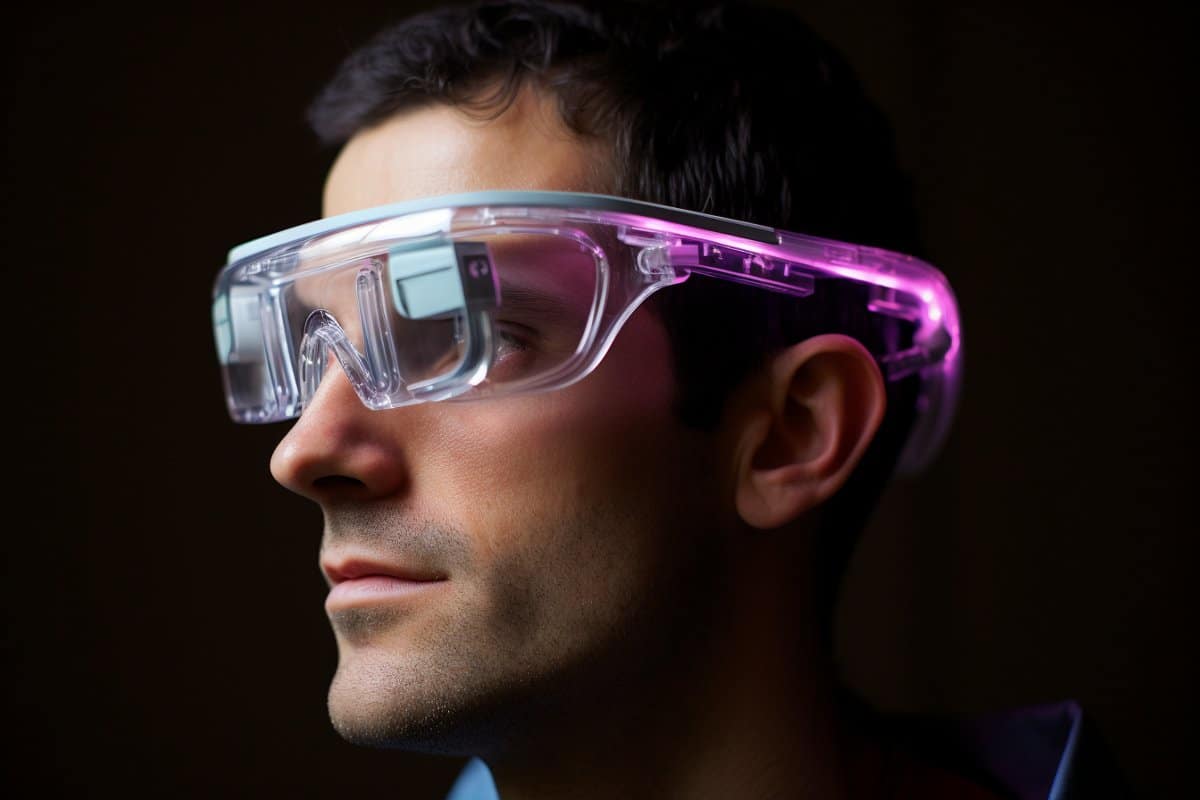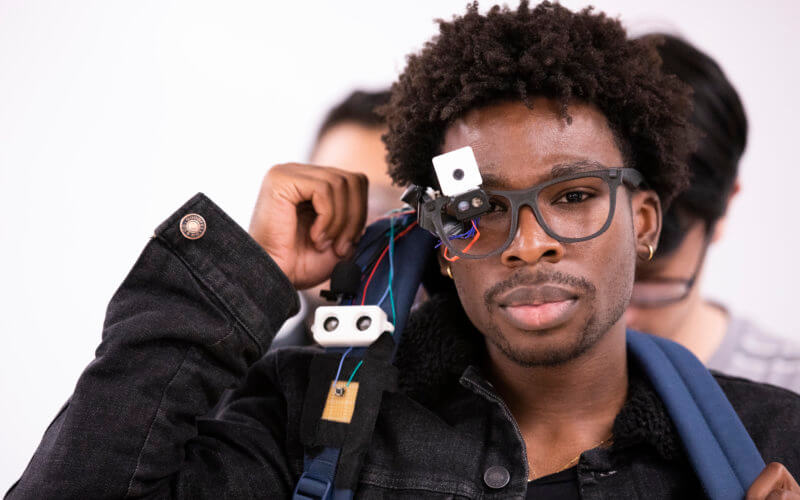Enhancing Access Via Assistive Innovation for the Blind
The integration of assistive modern technology for the blind represents a pivotal innovation in ease of access, fundamentally modifying just how individuals browse their environments and involve with culture. From display visitors to ingenious wise canes, these tools not only boost independence yet also promote inclusivity in numerous balls of life. As we discover the diverse kinds of assistive devices and their concrete influence on daily living, it comes to be vital to examine exactly how recurring technological improvements are improving the landscape of support for the blind neighborhood. What effects do these developments hold for the future of availability?
Introduction of Assistive Modern Technology
Assistive technology describes a variety of devices and software application developed to improve the capabilities of people with handicaps, including those that are blind or aesthetically damaged. This modern technology plays an essential function in promoting freedom and boosting the quality of life for individuals. By providing alternative approaches for accessing details and doing day-to-day jobs, assistive innovation empowers individuals to navigate their atmospheres better.
The growth and execution of assistive innovation embrace a selection of concepts focused on fostering access. These concepts include user-centered style, which prioritizes the demands and preferences of the individual, and the assimilation of innovation into everyday tasks. Such developments ensure that assistive tools are not just useful yet simple and likewise user-friendly to make use of.
Moreover, assistive technology encompasses a varied range of solutions, from low-tech options like magnifiers to high-tech technologies such as display readers and Braille displays. The ongoing advancement of this field is driven by the requirement to address the one-of-a-kind obstacles dealt with by individuals with aesthetic problems (Wearable technology for low vision). As innovation remains to advancement, the capacity for enhancing availability and advertising inclusivity stays encouraging, ultimately adding to a much more equitable society

Sorts Of Assistive Devices
Many sorts of assistive gadgets are offered to sustain people who are aesthetically damaged or blind, each developed to attend to details demands and difficulties. These tools can be generally categorized into three primary kinds: low-tech, mid-tech, and sophisticated solutions.
Low-tech gadgets include products such as magnifiers, Braille tags, and tactile maps. These are relatively straightforward tools that enhance the individual's capability to engage with their atmosphere without calling for intricate modern technology.
Mid-tech tools commonly involve advanced functions, such as electronic magnifiers and mobile Braille note-takers. These tools can provide performances like speech output, permitting customers to gain access to information much more successfully.

Influence on Daily Living
The availability of various assistive devices significantly improves the lifestyle for individuals who are blind or visually damaged, affecting their day-to-day living in profound means. By integrating innovations such as display readers, Braille shows, and audio description services right into their regimens, users get better freedom and freedom. These tools assist in accessibility to information, allowing individuals to do day-to-day tasks, such as checking out e-mails, browsing public spaces, and taking pleasure in media web content.
Furthermore, assistive gadgets encourage people to engage more fully in social communications and area tasks. The ability to utilize mobile phones furnished with accessibility features enables for seamless communication and link with others. This connection cultivates a sense of belonging and lowers sensations of seclusion.
In expert setups, assistive innovation supports productivity by allowing individuals to complete job jobs successfully. Tools like voice recognition software application and specialized magnifying gadgets make it possible for customers to join the workforce on equal ground with their sighted peers.

Developments in Innovation
Recent technical improvements have actually substantially changed the landscape of devices offered for individuals who are blind or aesthetically impaired. The integration of man-made intelligence (AI) and artificial intelligence has actually provided rise to applications that boost navigation and object acknowledgment. For example, smartphone applications can now utilize AI to identify and define environments in real-time, offering users with important contextual information.
In find out here now addition, advancements in haptic modern technology have brought about the advancement of smart walking canes geared up with sensing units that find challenges and give responsive feedback. This encourages users to browse their setting with boosted confidence and freedom. Additionally, advancements in text-to-speech software and braille screens have enhanced the accessibility of digital web content, enabling smooth interaction with different media.
Wearable innovations, such as clever glasses, are also making strides in aiding aesthetic problems. As technology continues to evolve, the potential for also more transformative tools remains on the horizon.
Future Trends and Innovations
As modern technology quickly progresses, the future of assistive devices for individuals that are blind holds immense pledge. Innovations in fabricated intelligence (AI) and equipment discovering are positioned to transform the means blind individuals engage with their environments. AI-driven applications are being developed to improve things acknowledgment, allowing individuals to recognize and browse their surroundings with higher convenience and precision.
Furthermore, improvements in haptic feedback technology are allowing the production of responsive maps and navigation aids that supply real-time details through touch. These developments not only improve flexibility but also foster self-reliance. Furthermore, wearable tools outfitted with increased reality (AR) features are emerging, providing individuals aesthetic details via sound summaries, therefore linking the void in between the digital and physical globes.
Furthermore, the integration of smart home technology presents new opportunities for ease of access, allowing individuals to control their living environments through voice commands or smartphone applications. As collaboration in between technology programmers and the blind area continues, the focus on user-centered design will ensure that future advancements are customized to satisfy the special demands of this population (Wearable technology for low vision). The trajectory of assistive innovation promises a more empowering and comprehensive future for people who are blind
Conclusion
In verdict, assistive technology plays a critical function in boosting ease of access for individuals with visual problems. Continuous innovations in technology and user-centered layout make certain that these devices provide efficiently to the one-of-a-kind needs of the blind neighborhood.
The assimilation of assistive innovation for the blind stands for a pivotal development in access, fundamentally changing just how people navigate their atmospheres and involve with culture.Assistive technology refers to a range of gadgets and software program made to enhance the abilities of resource people with handicaps, consisting of those who are aesthetically damaged or blind. Wearable technology for low vision.As modern technology rapidly advances, the future of assistive devices for people that are blind holds tremendous promise. The trajectory of assistive technology promises a much more empowering and comprehensive future for people that are blind
In final thought, assistive modern technology plays a critical role in enhancing accessibility for individuals with visual directory impairments.